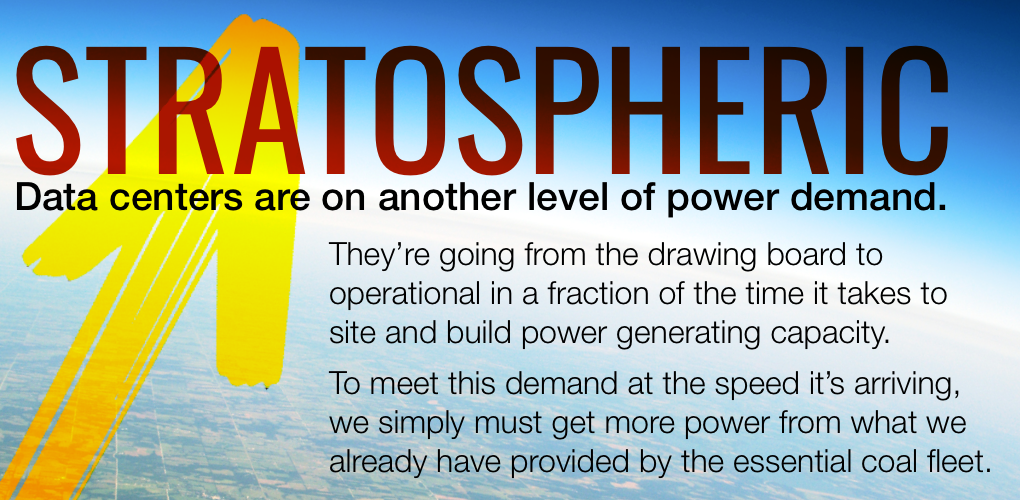
Can We Win the AI Race and Shield Consumers from Rising Power Prices?
Every week brings more news about surging power demand, rising electricity prices and the need for more dispatchable power. Political frustration with rising prices is beginning to collide with the desire to win the AI race and build the data center infrastructure needed to support this remarkable technological moment.
In the latest sign of the demand now on the horizon, Wood Mackenzie, a leading energy consultancy, says utilities have 17 gigawatts (GW) of large demand currently under construction with another 99 GW committed. Together, these approaching sources of demand will equal to 15.5% of current U.S. peak power demand. Remarkably, another 32 GW of demand is in advanced consideration and likely to move to construction. Together, we’re adding 20% more demand to a grid that is already maxed out.
Power Demand on Different Scale
Energy and technology guru Mark Mills from the Manhattan Institute recently explained just how unique data center power demand is. He wrote, “The scale of digital power is truly daunting. Consider the energy demands of other big facilities: the world’s tallest skyscraper, the Burj Khalifa, requires about 40 megawatts (MW), an electric steel mill about 100 MW, a giant TSMC semiconductor fabrication plant about 200 MW, and a giant oil refinery or LNG export terminal about 500 MW. In the U.S., we’re building only a few such facilities at any given time. Meantime, over the next few years alone—and in just the U.S.—construction is underway on dozens, and soon likely hundreds, of AI-centric data centers, each requiring 200 MW to 1,000 MW.”
As Mills so brilliantly illustrates, these facilities simply are on another stratosphere of power demand and they’re going from the drawing board to operational in a fraction of the time it takes to site and build power generating capacity. The scale of data centers also continues to grow. Consider Meta’s Hyperion data center in Louisiana. Expected to begin operation next year, it will eventually reach 5 GW of demand.
To meet this demand at the speed and scale it’s arriving, we simply must get more power from what we already have. The Trump administration has recognized the value of the coal fleet, rolling back the Biden regulatory onslaught and working to keep essential coal capacity on the grid. But we need tech giants to also step up to the plate.
With rising power prices for households such a pressing concern, overreliance on natural gas to meet the around-the-clock energy needs of data centers could lead to even more painful price spikes.
A Hedge Against Rising Natural Gas Prices
According to the Institute for Energy Economics and Financial Analysis, rising domestic demand for U.S. gas is also now being matched by rapidly rising international demand, putting increased pressure on U.S. power prices. The amount of natural gas now consumed by LNG exports equals about half of all the natural gas used to produce U.S. electricity. With U.S. LNG export capacity poised to jump 84% in just the next four years, immense pressure is mounting on domestic gas prices.
As the Industrial Energy Consumers of America recently warned, for every dollar increase in natural gas prices, U.S. consumers pay on average $34 billion more for gas and $20 billion more for electricity, or $54 billion annually.
For many Americans, there’s no escaping a natural gas price squeeze—making it all the more important we not only preserve dispatchable fuel diversity but encourage greater use of the coal fleet to take pressure off of rising gas and power prices.
We can win the AI race, meet soaring power demand and shield consumers from rising prices. But it will take every GW of the coal fleet – the nation’s electricity prices shock absorber – to do it.
- On September 10, 2025
